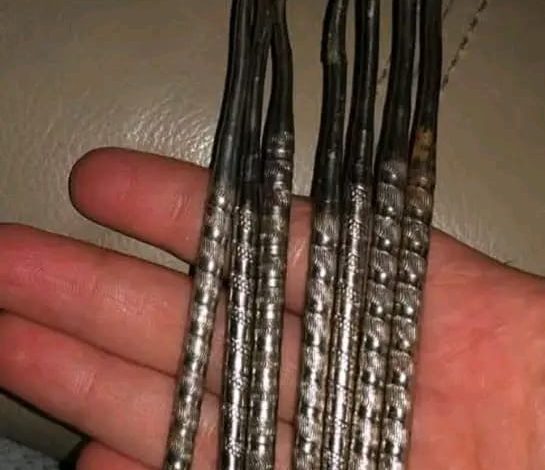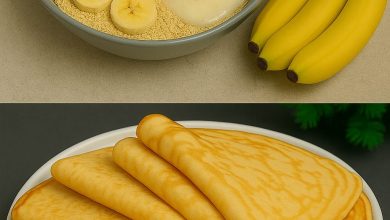Mystery of the Ornate Metal Picks – A Glimpse into Historical Beauty Tools or Cultural Craftsmanship

ADVERTISEMENT
Mystery of the Ornate Metal Picks – A Glimpse into Historical Beauty Tools or Cultural Craftsmanship 💫
Antique objects often captivate us with their beauty and leave us wondering about their origin, purpose, and the hands that once used them. The image above showcases a unique set of ornate, finely detailed metal tools — items that could easily be mistaken for decorative chopsticks or hairpins at first glance. However, a closer look reveals they are not everyday utensils but rather pieces with a very specific function tied to tradition, grooming, or perhaps even ceremonial use.
🧵 Introduction
What you see in this photo is a collection of vintage metal tools — thin, elongated items featuring engraved, textured handles and tapered, curved ends. They appear handmade, perhaps from silver or nickel alloy, and bear signs of age and wear, suggesting they’ve been well-used or stored for generations.
The size and design indicate these are vintage ear picks or earwax removal tools, a common item in many Eastern and Middle Eastern cultures. In those regions, such tools were not only practical grooming items but also part of a personal hygiene ritual passed down through families.
🧐 Description and Purpose
These tools are likely:
-
Traditional Ear Picks (Ear Spoons): These tools were crafted to gently remove earwax and debris from the ear canal. The thin, curved ends are designed for delicate handling, and the detailed grips allow for precise control.
ADVERTISEMENT
-
Material and Craftsmanship: They’re made of metal — probably brass or silver — and feature beautifully intricate engraving patterns, sometimes seen in tools from China, India, or Persia.
-
Hygiene and Status: In many cultures, these tools were as much a symbol of care and grooming as they were a mark of refinement. Wealthier families had tools crafted in silver or decorated with inlays. Some were even gifted during ceremonies or kept in family kits.
These tools were often part of grooming sets along with tweezers, nail cleaners, and other personal care items. In aristocratic or noble households, they could even reflect social status.
🏺 Historical and Cultural Significance
Throughout history, grooming tools have been viewed as essential items — a way to maintain health and personal dignity. In traditional Chinese and Japanese medicine, ear cleaning was part of a wellness routine believed to improve clarity and comfort. The tools were sometimes kept in ornate boxes or hung from belts on keychains for regular use.
The presence of so many similar tools in one hand also suggests this could be a collector’s item, a vendor’s display set, or an inheritance passed down through generations. Each one may have a slightly different curvature or size, depending on the age of the user or the specific technique required.
ADVERTISEMENT
Today, modern medicine has shifted toward disposable cotton swabs and electronic devices for ear cleaning. Still, these antique tools remain popular with collectors, historians, and vintage enthusiasts for their artistry and connection to forgotten traditions.
✨ Conclusion
The tools pictured above are far more than just metal sticks — they are reflections of a time when grooming was done with intention, beauty, and care. Crafted with patience and used with precision, these vintage ear picks hold a unique place in cultural history. They remind us that even the simplest daily rituals once held elegance and artistry — proof that utility and beauty can exist hand in hand.
If you ever stumble upon a similar set at a flea market or antique shop, know that you are holding a story in your hands — one of hygiene, culture, craftsmanship, and a tradition that quietly lives on.
ADVERTISEMENT




